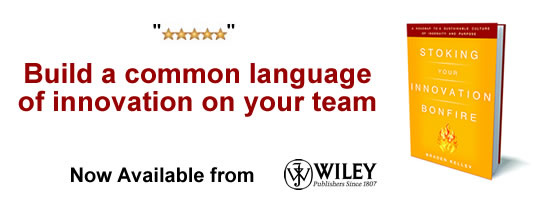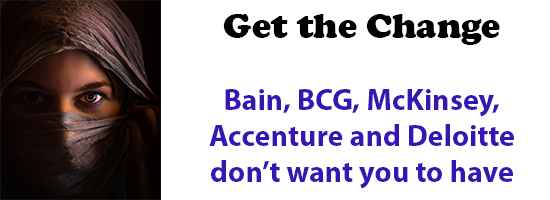
GUEST POST from Stefan Lindegaard
Strategic foresight is an essential discipline for organizations aiming to navigate an increasingly complex and uncertain future. It involves a systematic exploration of potential futures to inform strategic decision-making. This approach enables organizations to anticipate changes, identify opportunities, and mitigate risks, thereby ensuring their long-term sustainability and competitiveness.
In my role at Manyone, I am intrigued by how the skills of strategic foresight can be combined with my previous work and research on topics such as innovation, collaboration, mindset dynamics, leadership, team dynamics, strategic HR, and organizational development, including change management and transformation.
Over the next few months, I plan to delve deeper into this integration and share my thoughts, ideas, and perspectives on how we can better utilize these combined insights in our organizations today. I greatly value your input and look forward to an engaging dialogue!

To begin, I would like to present some key elements for implementing strategic foresight in an organization, accompanied by a brief explanation and some key questions for consideration:
1. Leadership Commitment and Involvement: The involvement of top leadership is crucial in strategic foresight. Their commitment legitimizes the process and ensures necessary resources are allocated. Leaders should actively participate and promote foresight, integrating it into the strategic agenda and encouraging organization-wide engagement.
- How can we ensure continuous leadership support for foresight initiatives?
- What role can leaders play in embedding foresight into the organizational culture?
- How can top executives model and advocate for strategic foresight within the organization?
- How can our leadership teams as well as the individuals in them best gain value from strategic foresight initiatives?
2. Cultural Alignment and Change Management: An organizational culture supportive of foresight is key. Cultures that value long-term thinking and are open to new ideas facilitate successful foresight activities. It may require managing cultural change to challenge existing assumptions and norms.
- What cultural barriers exist to implementing strategic foresight?
- How can we foster a culture that values and supports long-term thinking?
- What change management strategies are needed to align the culture with foresight practices?
- How can we use strategic foresight to enhance internal and external communication in this context?
3. Building Internal Foresight Capabilities: Developing internal foresight expertise ensures the organization can continually engage in foresight activities. Training staff and integrating foresight practices into regular activities are critical for building and sustaining these capabilities.
- What training or development is needed to build foresight skills within our team?
- How can foresight be integrated into existing roles and responsibilities?
- What resources are required to sustain internal foresight capabilities over time?
- Who from the outside can help us learn more about and build these internal capabilities?
4. Cross-Functional Collaboration: Collaborating across different departments enhances the foresight process with diverse insights. Effective foresight requires input from various functional areas to ensure a comprehensive understanding of potential futures.
- How can we facilitate cross-departmental collaboration in the foresight process?
- What structures or processes are needed for effective cross-functional integration?
- How do we ensure representation and participation from all relevant departments?
5. Scenario Development and Utilization: Developing diverse, plausible scenarios is central to foresight. These scenarios aid organizations in exploring and preparing for various futures, enhancing decision-making under uncertainty.
- How do we develop and select relevant and diverse scenarios?
- How will these scenarios be used to inform decision-making and strategy?
- What processes should be established for regularly reviewing and updating scenarios?
- How do we create “living artifacts” that allow us to test out as well as create action steps based on the scenarios?
6. Feedback Loops and Responsive Adjustments: Strategic foresight is dynamic, requiring ongoing refinement. Establishing feedback mechanisms allows for continual adjustment of foresight activities and strategies based on new information and outcomes.
- What feedback mechanisms can be established to assess our foresight activities?
- How can we ensure our strategies remain responsive to new foresight insights?
- What processes are in place for adjusting our approach based on feedback?
7. Aligning Foresight with Strategic Execution: Integrating foresight into strategic execution ensures that long-term insights shape operational planning. This alignment is essential for a proactive and prepared approach to future challenges and opportunities.
- How will foresight insights be translated into actionable strategies?
- What steps will ensure foresight is integrated into operational planning?
- How can we track and measure the impact of foresight on strategic execution?
8. Communication Strategies: Effective communication of foresight findings ensures understanding and engagement across the organization. A clear communication strategy is essential for fostering a shared vision of the future and coordinated action.
- How do we effectively communicate foresight findings throughout the organization?
- What communication channels and methods will be most effective?
- How can we use foresight to foster organizational alignment and shared understanding and in particular in the context of change management and transformation?
9. Balancing Short-term and Long-term Perspectives: Balancing immediate operational needs with long-term foresight is challenging but essential. Organizations must develop tools and processes to ensure short-term decisions are informed by long-term insights.
- How can we balance immediate business needs with long-term strategic foresight?
- What tools or methods can help align short-term decisions with long-term insights?
- How do we manage tensions between short-term and long-term objectives?
10. Evaluating External Partnerships: External partnerships can enhance an organization’s foresight capabilities, providing additional insights and expertise. Selecting and evaluating these partnerships carefully ensures they complement internal efforts.
- How do we identify and select appropriate external partners for foresight activities?
- What criteria will we use to evaluate the effectiveness of these partnerships?
- How do we ensure external partnerships are aligned with our strategic objectives?
Of course, this overview is just the beginning. There are many more facets to strategic foresight, and each organization will have its unique perspective, shaped by distinct opportunities and challenges.
I encourage you to use this primer as a starting point to spark deeper conversations about strategic foresight within your organization. Let it be a catalyst for exploring how these concepts can be tailored to your specific context and goals.
If you find these insights resonate with you, or if you’re eager to delve further into how strategic foresight can transform your organization, I welcome the opportunity to connect and explore these possibilities together. Feel free to reach out for a more in-depth discussion.
Image Credit: Pixabay, Stefan Lindegaard (Manyone)
![]() Sign up here to get Human-Centered Change & Innovation Weekly delivered to your inbox every week.
Sign up here to get Human-Centered Change & Innovation Weekly delivered to your inbox every week.













